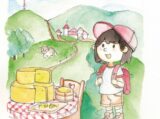How well do you know your homeland?
As you know, Vorarlberg is a very beautiful region – we all love living here. You probably know your home community well and have already taken a trip or two. But did you also know that many sights and places in Vorarlberg hide great stories? And that it's even more fun to explore such places and dig into these stories? Come with us on a little journey through Vorarlberg and discover new and familiar places in a playful way. Did you know ...?

Gallusstift and Vorarlberg State Library
The Gallusstift (and the largest library in the region), with over 600,000 books, has a long tradition. First built in the 14th century, it served as a Roman cult site, noble residence, school and library. Many of the books here are several hundred years old. Do you know when and where the first book was printed in Vorarlberg? Four centuries ago – in 1616 – the "Emser Chronik" was produced in the first Vorarlberg printing press, located in the Dompropstei-Gasse, today's Hohenems Market Street.

Wildpark am Ardetzenberg - since 1963 in Feldkirch
Around 130 animals, belonging to 23 different species, live in the wildlife park on the 631m high Ardetzenberg. From mouflon to lynx and wolf to wild boar, you can find it all here. Have you ever been to the wildlife park? Can you think of another animal that lives up here? In case you get hungry or thirsty from watching all the animals, there is a kiosk in the wildlife park. And to ensure that the animals feel comfortable here, visitors must follow the prescribed park rules.
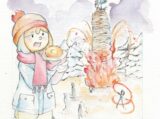
Funkenabbrennen - chasing away winter
The "Funken," the burning of a stacked wooden tower, is an old Alemannic tradition that is believed to bring luck. Traditionally, it is used to drive away winter on the first Sunday after Ash Wednesday - Funken Sunday. The "Funkaküachli," a deep-fried yeast dough pastry, is served alongside other treats during Funkenabbrennen. Did you know that the tallest Funken in Vorarlberg, over 60 meters high, stood in Lustenau in 2019 and made it into the Guinness Book of World Records?
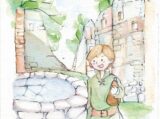
Konrad, the well, and Burg Alt-Ems
At an elevation of 740 meters, you can see the remains of one of the largest castle complexes in Central Europe: Burg Alt-Ems. It had a length of 800 meters, a width of up to 85 meters, seven gates, a drawbridge, and 47 rooms. In the inner castle courtyard, you can still see Konradsbrunnen, a well surrounded by a legend. As the story goes, to help thirsty workers during the construction of the castle, Konrad, the son of the then Count Heinrich, created it through a miracle. Have you ever been to Burg Alt-Ems and seen the well?

Mason - the fourth largest waterfall in Austria
Mason waterfall is a natural monument in Braz in the Klostertal and has a height of 80 meters. It is home to various animals, including chamois, lynx, wild boar and more. Have you been to the Mason waterfall before? Can you think of any other high objects or buildings?
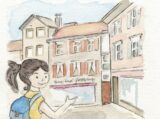
Europe's narrowest house in Bregenz
Would you have thought that Europe's narrowest house is in Bregenz? It is located between Leutbühel and the Kapuzinerkloster at Kirchstraße 29 and is only 57 cm wide. The entrance door is even partially built into the facade of the neighboring house. If you look closely, it is actually a bit of a trick :o) because only the facade is narrow; behind it, the house widens out like a wedge. Nevertheless, it's definitely worth a visit! Do you know of any other narrow buildings around here?
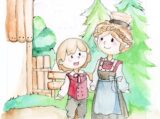
"Traditional clothing" in Bregenzerwald
Historical "traditional clothing" is still worn in Vorarlberg today, including the oldest clothing in the Alpine region, the Bregenzerwälder Tracht. The women's costumes are made in the "Juppenwerkstatt" in Riefensberg. The traditional black Juppen fabric made from glossy linen is produced here and a single Juppe has up to 500–600 folds. There are various headgear options, from the Spitzkappe to the Angelika-Kauffmann-Hut to the famous Schappele. Did you know that the gold sequin crown is only worn by girls until the day of their wedding?
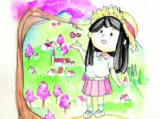
The famous Kirsch (cherry) schnapps from the "Kriasidorf"
With 15 different varieties and a total of almost 2,200 cherry trees, the mountain village of Fraxern, with about 650 inhabitants, has become famous. These trees grow on slopes, providing excellent climatic conditions for growing cherries. Even the municipal coat of arms features three red cherries with green leaves, emphasizing the importance of the large, black, sweet cherries. Did you know that the so-called Kirschwasser (cherry schnapps) is an alcoholic drink for adults only? The famous "Fraxner Kriasi" is a schnapps distilled by over 30 rural distillers in the village.
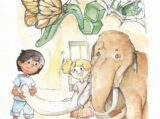
inatura - Museum for all the senses
The inatura – Nature Experience Show in Dornbirn takes you through the typical habitats of Vorarlberg, such as mountains, forests and water. It offers special exhibitions and introduces visitors to the Vorarlberg wildlife, both past and present. Did you know that even mammoths – the predecessors of today's elephants – used to live here? In 1859, a mammoth tooth was found in Schesatobel in Bürs, which has since been exhibited in various exhibitions and occasionally at inatura.

The Nibelungenlied (song of the Nibelungen) at Palast Hohenems
Palast Hohenems – originally the residence of the Count of Hohenems – was built in 1565 and is now privately owned by the Waldburg-Zeil family. In 1755, Manuscripts A and C of the Nibelungenlied were found here. Did you know that the Nibelungenlied is not a song to sing? It has 2,000 stanzas and is preserved in eleven complete manuscripts and several fragments. It is, however, an epic poem that belongs to the Nibelungen saga.

Riebel and Käsknöpfle (cheese spaetzle) - what Vorarlberg likes to eat
Riebel – also called Stopfer, Pflutta or Brösel – is a simple maize dish made from a mixture of light corn flour and wheat semolina. In the past, Riebel was mainly a meal for the poor and rural families, usually eaten for breakfast with coffee or milk. What is your favourite meal? Is it something typical of Vorarlberg like Riebel or Kässpätzle, or is it from another country?
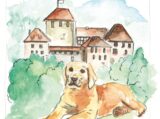
Hasso, the animal hero at Schattenburg
Schattenburg, the symbol of Feldkirch, was built around 1200 by Count Hugo of Montfort, the founder of the city. The castle houses a museum with 18 exhibition rooms and a restaurant. Today, it is one of the best-preserved medieval castle complexes in Central Europe. However, around 1965, Schattenburg was on fire. Hasso, the castle's dog, saved the inhabitants but perished in the flames himself. Have you heard his legend? It is said that if you place a sausage on his grave in the castle courtyard, it disappears overnight ...
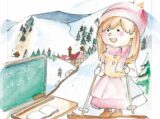
Strict dress codes for girls in school
Can you imagine that children were not allowed to decide what clothes they wore in the past? In 1931, girls still had to wear skirts in school, even if they lived in a mountain village and had to ski to school. Teachers at the time advocated for girls to be allowed to wear ski pants so they wouldn't freeze, but the bishop was against it. What do you wear when you go skiing? And what else do you need? A skirt, pants, helmet?
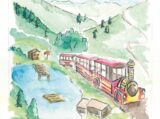
Seewaldsee in the Großes Walsertal Biosphere Reserve
With a leisurely train ride, you can reach the popular Seewaldsee in the Großes Walsertal Biosphere Reserve. During the journey, you can enjoy beautiful views from the train. When you arrive, you can take a quiet secluded dip away from any noise. There's also a fine regional cuisine restaurant right by the lake. If you enjoy hiking, you can walk from Fontanella to the lake in about half an hour. Have you ever been to Seewaldsee? By train? Or even on foot?

The 4,000 steps of the Europatreppe (Europe's Stairs)
Europe's longest straight staircase climbs over 700 meters to the summit station of the Vermuntbahn in Partenen. Originally built as an access route to the inclined elevator along the former route, it has a slope of up to 86 percent. According to the markings on the staircase, there are exactly 3,609 steps of varying heights and lengths, making it a real athletic challenge for both young and old. How many steps can you tackle at once? Have you ever tested it at home?
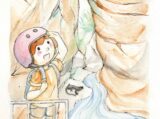
The Alpine Salamander in the Üble Schlucht (Nasty Gorge)
The Üble Schlucht (Nasty Gorge) in the Frutztal near Laterns is one of the numerous protected biotopes in the region due to its unique flora and fauna. The unique rock formations also provide a home for the Alpine Salamander. The gorges and ravines offer favorable conditions for these creatures because of their cool and humid climate. Additionally, they require stone slabs, rock crevices and wood as daytime hiding spots. Did you know that Alpine Salamanders can live up to 15 years and that they shouldn't be touched because they protect themselves from predators with a toxic secretion?
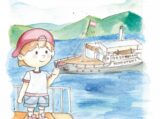
Lake Constance and the Hohentwiel
Lake Constance boasts the largest inland fleet in Europe, with about 60 to 80 ships. The Hohentwiel is the only remaining steamship and the oldest passenger ship on the lake. Lake Constance is the third largest lake in Central Europe and is located at the borders of Austria, Germany and Switzerland. It is 63 kilometers long, 14 kilometers wide and covers an area of 536 square kilometers. At its deepest point, the lake is 251 meters deep. It's a good hiding place for the more than 300 shipwrecks at the bottom of Lake Constance... Do you know why ships can sink?

Piz Buin - Vorarlberg's highest mountain
Majestically perched at 3,312 meters above the Ochsental Glacier on the border between Austria and Switzerland, the "Piz Buin" is the highest mountain in Vorarlberg. On July 14, 1865, it was first climbed by four mountaineers. Did you know that on the same day, the nearby Matterhorn in Switzerland was also first conquered? The name of the mountain is also interesting: In the Rhaeto-Romanic language spoken in the Swiss canton of Graubünden, "Piz Buin" means "Ochsenspitze" and it was once called "Albuinkopf" in Vorarlberg.
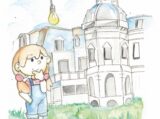
The first lightbulb in Kennelbach
The first electric iron, the first electric hotplate and the first electric lightbulb were manufactured in Vorarlberg. Did you know that the first electric kitchen in Kennelbach was invented by Friedrich Wilhelm Schindler and presented in Chicago in 1893? The electric pioneer lived in Villa Grünau, which was popularly called the "electric house" and already had an electric stove and oven before 1900. Did you also know that Villa Grünau is the most beautiful town hall in Vorarlberg?
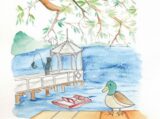
Fischersteg - an airport?
An airport? Yes, you heard right. In the 1920s, seaplanes took off from here on their round trips over Lake Constance. Did you also know that this charming pier was built only because of an unusual regulation? In 1902, it was not allowed to fish from the shore, so this wooden pier was built to allow fishing rods to be cast further into the water, circumventing the strict law. Very clever minds of the time.
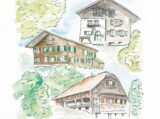
How we live in Vorarlberg
In Vorarlberg, there are various traditional rural house forms – the Montafonerhaus, the Wälderhaus, the Walserhaus and the Rheintalhaus. Moreover, there used to be a elderberry bush near almost every farmhouse. According to legend, it was chosen as the favorite tree by Holda, a Germanic goddess, and it protected the house, farm, people and animals. Even today, you can find an elderberry tree in front of many houses. Do you have one in front of your home? Do you know what you can make from its blossoms and berries?

Pfänder - the mountain at Lake Constance
Have you ever been to the most famous viewpoint in the region? On Pfänder near Bregenz, at 1,064 meters above sea level, you have a fantastic panoramic view of the entire Lake Constance and can view 240 Alpine peaks in Austria, Germany and Switzerland. On the circular hiking trail in the Alpenwildpark, you can learn about the local flora and fauna and experience ibex, wild boars, mouflons, deer and marmots in their natural habitat. Do you know the giant forest slide in the wildlife park? An experience you shouldn't miss!

"Formarinsee" and Rote Wand
The emerald green lake and the red mountain, with a height of 2,704 meters, are a natural jewel of a special kind and were voted Austria's most beautiful place in 2015. If you hike up from Dalaas on the "Stebok Wäg," you'll find particularly valuable information about the Klostertal. Did you know that the Rote Wand gets its name from the prominent band of red chalk that runs horizontally across the entire mountain? And that many fossils and shells have already been found at the Stone Sea southeast of the lake?

“St. Laurentius Kirche (St. Laurence Church) - the symbol of Bludenz”
The old building high above the old town with its onion dome and the Baroque Schloss Gayenhofen was first mentioned in 842, over 1,000 years ago. Especially worth seeing are the high altar made of black marble and the bell tower with its five bells. Did you know that two of them are so valuable that they were not melted down during both world wars? And that the German king and later Emperor Otto I. dedicated the church to his favorite saint, Saint Laurence? On August 10, 955 – the saint's day – Otto I. achieved a tremendous victory over the Hungarians.
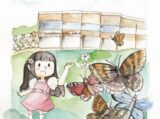
Großes Walsertal Biosphere Reserve
Did you know that the biosphere reserve is a haven for butterflies? Here, you can find over 965 different butterfly species, including three protected and thought-to-be-extinct ones. The bedstraw hawk-moth, the clouded apollo and the marsh fritillary still find suitable habitats in the remote areas of the protected area. In general, the aim of biosphere reserve is to use nature without harming it, which means carefully balancing people's needs with the conservation of natural habitat.

Schmalspurbahn Wälderbähnle ...
„Fahr mr no a kläle, fahr mr no a kläle, mit am Wälder Isabähnle ...” Do you know this song? Thousands of workers were involved in the construction of the Bregenzerwaldbahn from 1900 to 1902, so this masterpiece of railway construction could be put into operation along the Bregenzerach. Over time, the route had to be closed many times due to rockslides and landslides, which ultimately led to the regular passenger service being discontinued in 1987 and the operation of a museum railway – the Wälderbähnle - between Bezau and Schwarzenberg.
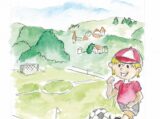
Football field Sonntag - the center of Vorarlberg
A football field is the geographic center of Vorarlberg? Yes, it's hard to believe, but Sonntag in the Großes Walsertal is truly the center of Vorarlberg. Do you also know how to calculate this center? You must determine the geometric center. However, with the odd shape of our federal state, this is not so easy. You can also do it this way: Trace the outer borders of Vorarlberg on cardboard, cut it out, and try to balance this model on a finger. The spot where the card doesn't fall off is the center of the state!
